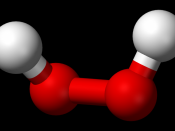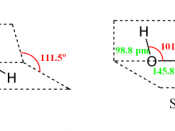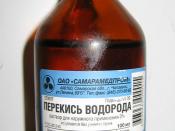IntroductionCatalase is an enzyme that speeds up organic reactions. (Starr & Taggart, 2004, pg. 107). It is important because it promotes the decomposition of hydrogen peroxide, H2O2 (Starr & Taggart, pg. 107). Hydrogen peroxide is a byproduct of cell metabolism that is toxic to cells. (Starr & Taggart, 2004, pg. 96-97) This reaction can be written as: 2H2O2 2H2O + 02 (Starr & Taggart, pg. 96). Oxygen gas (02) is a product of this reaction. The rate of oxygen production will help indicate the speed of the reaction. The purpose of this experiment is to find out how temperature, pH, and concentration affect the rate of oxygen production. The experimental hypotheses are: as the catalase concentration increases, the rate of oxygen production will increase, as temperature increases, the rate of oxygen production will increase, and as the pH increases, the rate of oxygen production will increase. Therefore, the null hypotheses are: the change in the temperature, concentration, or pH will not have a statistically significant effect on the rate of oxygen production from the breakdown of hydrogen peroxide by catalase.
In this experiment, the independent variables are the concentration of catalase, the temperature, and the pH of the reaction. The levels of concentration are 25%, 50%, 75%, and 100%. Five trials were conducted for 25% and 50% concentrations and four trials were done for 75% concentration. The control level, 100% was conducted eighteen times. The levels of temperature are 10o, 22o, and 37o centigrade. Four trials were conducted for 10 and 37 degrease centigrade. The control level, 22o, was conducted eighteen times. The levels of pH are 4, 7 and 10. Four trials were conducted for 4 and 10 pH. The control level, pH 7, was conducted eighteen times.
The dependent variable is the rate of oxygen production measured...


